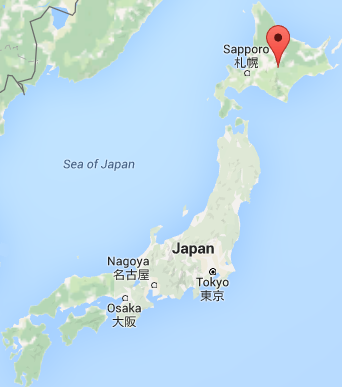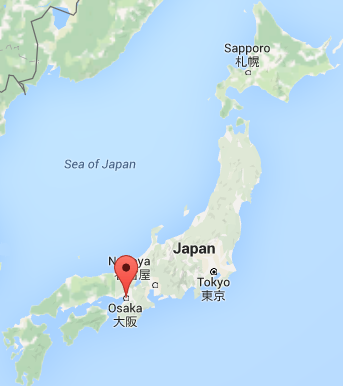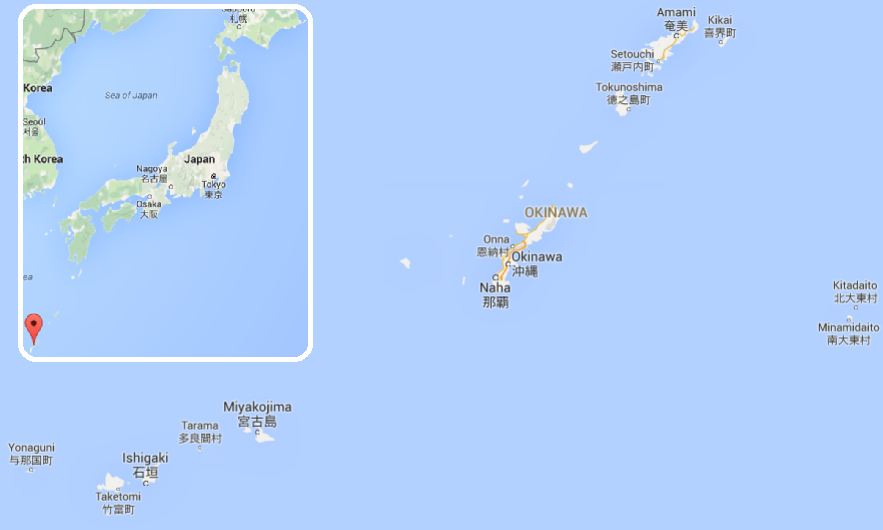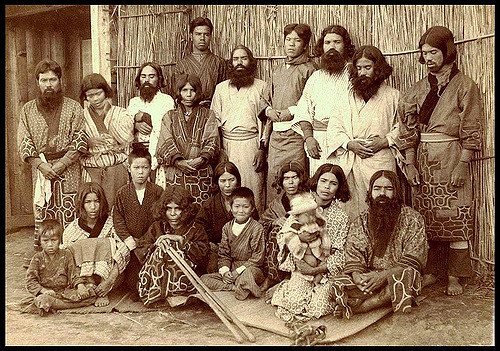Japanese isn’t always spoken the same way– there are a number of different Japanese dialects which go from somewhat subtle differences compared to standard Japanese, to major ones. If you weren’t previously aware Japanese has dialects, you might be surprised to learn that Japanese isn’t the only language native to Japan, there’s also the Ainu language and Ryuukyuuan languages, like the Okinawan language.
Dialects vary depending on where you are in Japan, and are referred to as 弁 ( べん), in this case meaning “dialect”. For instance, Osaka (大阪) has it’s own dialect, so the word for the “Osaka Dialect” is 大阪弁 (おおさかべん), and another example, the word for the “Kyoto Dialect” is 京都弁 (きょうとべん), using the same logic. The dialects in the south western part are referred to as 関西弁 (かんさいべん), literally meaning “western area dialect”. Both Osaka and Kyoto are in the Kansai area, and so even though they have their own dialects, they are both in the 関西弁 category. Dialects not only use their own words, but can also use their own grammar structures.
The dialect spoken in Tokyo is of course 東京弁, and is what 標準語 (ひょうじゅんご) meaning “standard language”, or alternatively 共通語 (きょうつうご) meaning “common language” are originally based from, though the Tokyo dialect is now not really considered 共通語. Standard Japanese is what’s taught in schools, and what nationwide newscasters, newspapers, and radio use. It’s sort of like the Midwestern accent in the United States and it’s reputation with news reporting, and it’s understood everywhere in Japan, even in Okinawa which has it’s own languages. If you’ve just started learning Japanese and aren’t sure which dialect you’ve been learning, and unless you’ve been learning from a Japanese friend who isn’t from Tokyo (and probably even then), you’ve been learning 共通語.
There are many different dialects unique to certain cities, however all dialects of Japanese mostly fit into three generic categories: Kansai-ben, or the dialects spoken in the Kansai (south-western) area, such as Osaka, Kobe, Kyoto, and Nara– Tohoku-ben, the dialects spoken in the Tohoku area (north eastern Japan) , such as Sendai, Iwaki, and Aomori– and Standard Japanese (or the Tokyo dialect).
Here are some examples of a couple dialects in Japanese, along with a comparison to standard Japanese. Please keep in mind that the standard Japanese isn’t always a perfect interchange, so if you are interested in a dialect you should research the usages further!
Hokkaido-ben (北海道弁)

Hokkaido is Japan’s farthest north prefecture, and also the second largest. As mentioned earlier, there is the Ainu language in Japan spoken by the Ainu people who are from this region (which is an entirely separate language, not a dialect), and some Ainu influence can be observed in the Hokkaido dialect, especially in location names. Hokkaido-ben is one dialect in the Tohoku-ben category, though it’s not in the Tohoku region, it’s in it’s own region– Hokkaido, which is just north of Tohoku. As a note, Tohoku-ben is considered to be the “most difficult” dialect and the furthest from standard Japanese.
| Hokkaido Dialect | Standard Japanese | Translation |
|---|---|---|
| こわい | 疲れた (つかれた) | Tired |
| じょっぴん | 鍵 (かぎ) | Key |
| なまら | とても / 非常(ひじょう)に | Very |
| したっけね | またね / じゃあね | Bye |
| めんこい | かわいい | Cute (esp. pets and children) |
| お晩です | こんばんは | Good evening |
Osaka-ben (大阪弁)

Osaka is in the Kansai region, which is the second only to Tokyo as the largest metropolitan area in the country. It’s also where a lot of Japanese entertainers and comedians hail from, so if you watch Japanese TV, you’ve probably encountered Osaka-ben quite a bit, which is of course in the Kansai-ben category. Osaka-ben is also considered the most recognizable dialect in Japanese.
| Osaka Dialect | Standard Japanese | Translation |
|---|---|---|
| ~へん わからへん | ~ない わからない | ~Not Don't understand |
| ~や | ~だ | Is / am / are / to be |
| ~わ | ~よ | Exclamation particle |
| あかん | だめ | Not good / No |
| ほんま | 本当 (ほんとう) | Really |
| アホ | ばか | Idiot |
| ちゃう | ちがう | Different / Wrong |
| めっちゃ | すごい / すごく | Very |
Okinawan Languages

Okinawa is about halfway in between Japan and Taiwan, extending all the way to the coast of Taiwan, and is an extremely beautiful group of sub tropical islands. Based on it’s location, it’s no mystery that Okinawa has it’s own languages, the Okinawan languages, or うちなーぐち in Japanese. It’s unfortunately a dying language as the majority of it’s speakers are elderly and it’s used less and less daily. There’s a bit of a restoration movement, but the direction has been going towards all Japanese since that’s what schools are taught in, what media is broadcast in, and how with modern technology they aren’t as “isolated” as they once were, and have a lot more contact with the rest of Japan. The Okinawan language is derived from Old Japanese and is thus a Japonic language. The two languages most likely split from each other sometime between the first and twelve century. While the rest of the world identifies Okinawan as it’s own language, it’s officially recognized by the Japanese government as a dialect of Japanese, and so a lot of Japanese will refer to Okinawan not only as うちなーぐち, but also 沖縄弁 or 沖縄方言, meaning Okinawa Dialect.
The Okinawan languages are actually a set of six different languages, known as the Ryuukyuuan languages, however since うちなーぐち has the most speakers, when referring to Okinawan it’s inferred that it’s うちなーぐち. The distance between the islands are so great, there’s a great difference in the different Okinawan “dialects” that they are often considered their own languages.
You be the judge if Ryuukyuuan languages are a dialect of Japanese, or their very own language!
| Language | Thank you | Welcome |
|---|---|---|
| 共通語 (Standard Japanese) | ありがとう | ようこそ |
| うちなーぐち (Okinawan, i.e. Naha) | 御拝(にふぇ)ーでーびる | めんそーれー |
| 奄美語 (Amami-go) | ありがたさまりょうた | いもーれ |
| 国頭語 (Kunigami-go) | みへでぃろ / とーとぅがなし | うがみやぶらめんしょーり |
| 宮古語 (Miyako-go) | たんでぃがーたんでぃ | んみゃーち |
| 与那国語 (Yonaguni-go) | ふがらっさーゆー | わり |
| 八重山語 (Yaeyama-go) | にふぁいゆー | おーりとーり |
Here’s an interesting video talking about the differences in the Okinawan languages, plus it’s spoken in うちなーぐち so you can hear what it sounds like. Okinawan subtitles are at the top, Standard Japanese in the middle, and English subtitles at the bottom.
Ainu Language
The Ainu people and their language are in the farthest north of Japan, extending as far north as the southern tip of Russia. The Ainu are indigenous to Japan, though they aren’t what you would expect from a “Japanese” person. Historically they were said to be quite hairy and bearded, and have Caucasian-like features. Nowadays Ainu have integrated with Japanese and so it’s hard to say if there is a “pure” Ainu bloodline in existence. The Ainu that live today do look a lot more Japanese than historic photographs, so I think it’s safe to conclude the bloodline has become mixed.
Here’s a photograph of native Ainu people in the past: 
“Hokkaido Ainu” is the only survivor in the Ainu language category, where there were at least 19 different dialects at one point in time. The last speaker of “Sakhalin Ainu” for instance died in 1994. The Ainu language has been endangered since the 1960’s and most Ainu (aprox. 15,000) speak only Japanese. It’s said there are only about ten native speakers remaining in the world today.
Ainu is written in katakana, and the word order is similar to Japanese, in that it’s SOV (subject-object-verb), however beyond that the resemblance ends.
Here are some examples of the Ainu language, compared to Standard Japanese:
| Ainu Language | Standard Japanese | Translation |
|---|---|---|
| エレヘネコンラン | お名前は? | What's your name? |
| タアンペネㇷ゚タパナ? | これは何ですか | What is this? |
| ピㇼカノエチオカイルヘ | お元気ですか | How are you? |
| イヤイライケレ | ありがとうございます | Thank you |
Here’s a video spoken in Ainu, teaching some Ainu words
